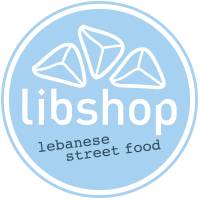Among the foods typical of the Mediterranean diet, and more generally of the diet characteristic of the Blue Zones, those places in the world where healthy life expectancy breaks records, we find one of the most publicized superfoods in the world , namely the olive, and the oil extracted from it.
Olive oil consumption associated with good health markers
The results of certain scientific studies have demonstrated a low incidence of heart disease and certain cancers in countries where the diet is of the Mediterranean type, with a dominance of fats mainly provided by olives.
An ideal lipid profile
Its main advantage lies in its lipid distribution, with a vast majority of monounsaturated fatty acids, beneficial if not neutral in terms of health, and a very low proportion of saturated fatty acids, which is beneficial for health markers, and a very small part polyunsaturated fatty acids, the main disadvantage of which would be to contain too much proinflammatory omega-6, which is not the case for both the olive and the oil extracted from it.
✨
At the house of Libshop, we are specialized in the manufacture artisanal of mezzes, shawarma, falafel, Lebanese-inspired dishes and pastries for more than 10 years.
👉 Book your table at one of the Libshop restaurants in Paris
👉 Order Libshop for click & collect or delivery
✨
Rich in micronutrients
Olives contain 3.3 mg of iron per 100 g of food. As a reminder, the recommended iron values for an adult are 8mg for men, and up to 18mg for women, and iron is particularly useful for transporting oxygen in the blood and for energy production.
The olive also provides copper, and although we need this micronutrient in infinitesimal quantities, it ensures the strength of bones, the quality of connective tissues and cartilage, in particular by participating in the formation of collagen, and it allows also fight infections.
Finally, olives and olive oil are rich in calcium and especially vitamin E. Vitamin E could counteract the occurrence of heart attacks and strokes, would promote the elevation of the level of good cholesterol (HDL), thus allowing a reduction of 25% in the risk of cardiovascular diseases.
Vitamin E may also play a role in painful periods. Finally, she would also have action in the prevention of certain cancers (lung, stomach).
The other major interest of the olive is that it contains a large quantity of polyphenols, which have antioxidant properties that protect the cells of our body. These polyphenols contribute to prevent the risks of cancer, heart disease and Alzheimer's and Parkinson's disease. Experts say that a diet rich in phytonutrients promotes healthy aging.
Amount of olive oil
In practice, daily consumption of olive oil could be between 2 and 4 tablespoons. Store in a glass bottle and protect from light. In general, it is used as a seasoning, and sometimes during gentle cooking, which therefore corresponds to the recommended values in practice.
Be careful, however, not to overdo it if you are already eating a very rich diet of carbohydrates (starchy foods and sugars), otherwise the simultaneous caloric intake of lipids from olive oil and sugars from starchy foods, the everything in large quantities, may not go well together.
The lower the carbohydrate consumption, the less olive oil we can afford to add, while ensuring a sufficient protein intake.
And that's pretty good, at Libshop, all our formulas respect a fairly high threshold for quality protein (beef, chicken or legumes), a moderate intake of carbohydrates and a supply of lipids mainly via olive oil!


